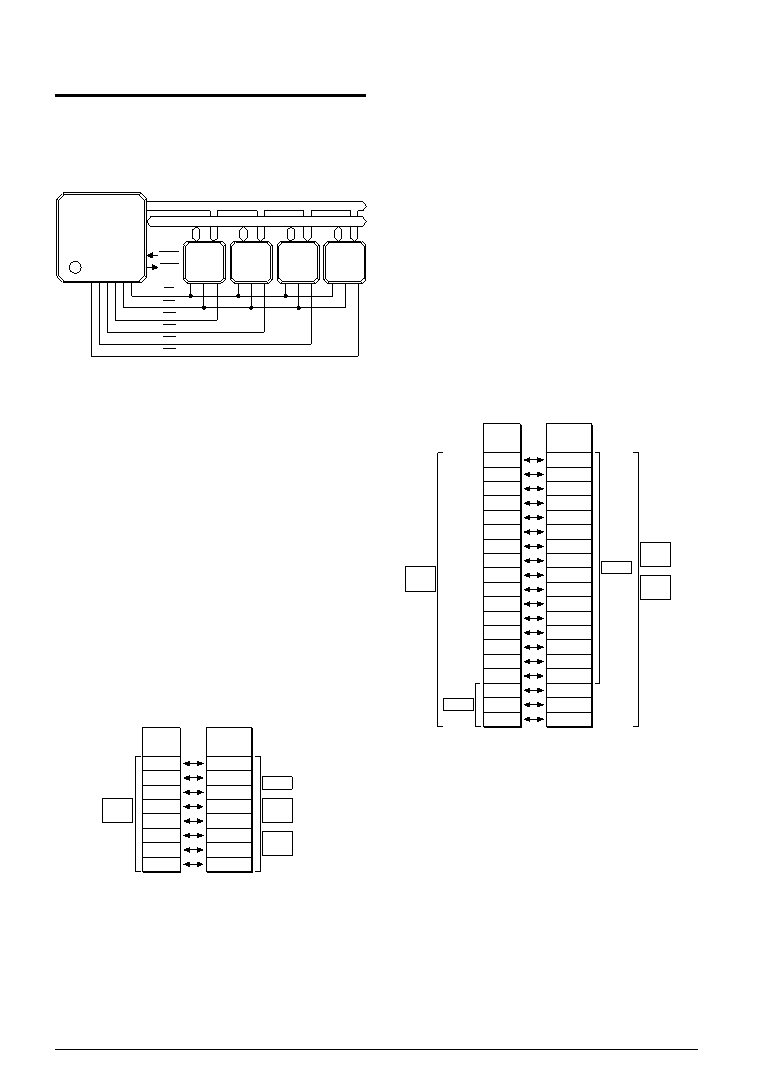- 您現(xiàn)在的位置:買賣IC網(wǎng) > PDF目錄98069 > S1C8F360F 8-BIT, FLASH, 8.2 MHz, MICROCONTROLLER, PQFP176 PDF資料下載
參數(shù)資料
| 型號(hào): | S1C8F360F |
| 元件分類: | 微控制器/微處理器 |
| 英文描述: | 8-BIT, FLASH, 8.2 MHz, MICROCONTROLLER, PQFP176 |
| 封裝: | QFP18-176 |
| 文件頁(yè)數(shù): | 133/217頁(yè) |
| 文件大小: | 1753K |
| 代理商: | S1C8F360F |
第1頁(yè)第2頁(yè)第3頁(yè)第4頁(yè)第5頁(yè)第6頁(yè)第7頁(yè)第8頁(yè)第9頁(yè)第10頁(yè)第11頁(yè)第12頁(yè)第13頁(yè)第14頁(yè)第15頁(yè)第16頁(yè)第17頁(yè)第18頁(yè)第19頁(yè)第20頁(yè)第21頁(yè)第22頁(yè)第23頁(yè)第24頁(yè)第25頁(yè)第26頁(yè)第27頁(yè)第28頁(yè)第29頁(yè)第30頁(yè)第31頁(yè)第32頁(yè)第33頁(yè)第34頁(yè)第35頁(yè)第36頁(yè)第37頁(yè)第38頁(yè)第39頁(yè)第40頁(yè)第41頁(yè)第42頁(yè)第43頁(yè)第44頁(yè)第45頁(yè)第46頁(yè)第47頁(yè)第48頁(yè)第49頁(yè)第50頁(yè)第51頁(yè)第52頁(yè)第53頁(yè)第54頁(yè)第55頁(yè)第56頁(yè)第57頁(yè)第58頁(yè)第59頁(yè)第60頁(yè)第61頁(yè)第62頁(yè)第63頁(yè)第64頁(yè)第65頁(yè)第66頁(yè)第67頁(yè)第68頁(yè)第69頁(yè)第70頁(yè)第71頁(yè)第72頁(yè)第73頁(yè)第74頁(yè)第75頁(yè)第76頁(yè)第77頁(yè)第78頁(yè)第79頁(yè)第80頁(yè)第81頁(yè)第82頁(yè)第83頁(yè)第84頁(yè)第85頁(yè)第86頁(yè)第87頁(yè)第88頁(yè)第89頁(yè)第90頁(yè)第91頁(yè)第92頁(yè)第93頁(yè)第94頁(yè)第95頁(yè)第96頁(yè)第97頁(yè)第98頁(yè)第99頁(yè)第100頁(yè)第101頁(yè)第102頁(yè)第103頁(yè)第104頁(yè)第105頁(yè)第106頁(yè)第107頁(yè)第108頁(yè)第109頁(yè)第110頁(yè)第111頁(yè)第112頁(yè)第113頁(yè)第114頁(yè)第115頁(yè)第116頁(yè)第117頁(yè)第118頁(yè)第119頁(yè)第120頁(yè)第121頁(yè)第122頁(yè)第123頁(yè)第124頁(yè)第125頁(yè)第126頁(yè)第127頁(yè)第128頁(yè)第129頁(yè)第130頁(yè)第131頁(yè)第132頁(yè)當(dāng)前第133頁(yè)第134頁(yè)第135頁(yè)第136頁(yè)第137頁(yè)第138頁(yè)第139頁(yè)第140頁(yè)第141頁(yè)第142頁(yè)第143頁(yè)第144頁(yè)第145頁(yè)第146頁(yè)第147頁(yè)第148頁(yè)第149頁(yè)第150頁(yè)第151頁(yè)第152頁(yè)第153頁(yè)第154頁(yè)第155頁(yè)第156頁(yè)第157頁(yè)第158頁(yè)第159頁(yè)第160頁(yè)第161頁(yè)第162頁(yè)第163頁(yè)第164頁(yè)第165頁(yè)第166頁(yè)第167頁(yè)第168頁(yè)第169頁(yè)第170頁(yè)第171頁(yè)第172頁(yè)第173頁(yè)第174頁(yè)第175頁(yè)第176頁(yè)第177頁(yè)第178頁(yè)第179頁(yè)第180頁(yè)第181頁(yè)第182頁(yè)第183頁(yè)第184頁(yè)第185頁(yè)第186頁(yè)第187頁(yè)第188頁(yè)第189頁(yè)第190頁(yè)第191頁(yè)第192頁(yè)第193頁(yè)第194頁(yè)第195頁(yè)第196頁(yè)第197頁(yè)第198頁(yè)第199頁(yè)第200頁(yè)第201頁(yè)第202頁(yè)第203頁(yè)第204頁(yè)第205頁(yè)第206頁(yè)第207頁(yè)第208頁(yè)第209頁(yè)第210頁(yè)第211頁(yè)第212頁(yè)第213頁(yè)第214頁(yè)第215頁(yè)第216頁(yè)第217頁(yè)

12
EPSON
S1C8F360 TECHNICAL MANUAL
3 CPU AND BUS CONFIGURATION
3.6 External Bus
The S1C8F360 has bus terminals that can address a
maximum of 512K
× 4 bytes and memory (and
other) devices can be externally expanded accord-
ing to the range of each bus mode described in the
previous section.
3.6.2 Address bus
The S1C8F360 possesses a 19-bit external address
bus A0–A18. The terminals and output circuits of
address bus A0–A18 are shared with output ports
R00–R07 (=A0–A7), R10–R17 (=A8–A15) and R20–
R22 (=A16–A18), switching between these functions
being determined by the bus mode setting.
In the single chip mode, the 19-bit terminals are all
set as output ports R00–R07, R10–R17 and R20–R22.
In the expanded 64K mode, 16 of the 19-bit termi-
nals, A0–A15, are set as the address bus, while the
remaining 3 bits, A16–A18, are set as output ports
R20–R22.
In the expanded 512K minimum and maximum
modes, all of the 19-bit terminals are set as the
address bus (A0–A18).
When set as an address bus, the data register and
high impedance control register of each output port
are detached from the output circuit and used as a
general purpose data register with read/write
capabilities.
S1C8F360
External
device
External
device
External
device
External
device
Address bus (A0–A18)
Data bus (D0–D7)
RD
WR
CE0
CE1
CE2
CE3
BREQ
BACK
Fig. 3.6.1 External bus lines
Below is an explanation of external bus terminals.
For information on control methods, see Section 5.2,
"System Controller and Bus Control".
3.6.1 Data bus
The S1C8F360 possesses an 8-bit external data bus
(D0–D7). The terminals and I/O circuits of data bus
D0–D7 are shared with I/O ports P00–P07, switch-
ing between these functions being determined by
the bus mode setting.
In the single chip mode, the 8-bit terminals are all
set as I/O ports P00–P07 and in the other expanded
modes, they are set as data bus (D0–D7).
When set as data bus, the data register and I/O
control register of each I/O port are detached from
the I/O circuits and usable as a general purpose
data register with read/write capabilities.
Each data bus line has a built-in pull-up resistor
that goes ON in input mode. (The same holds true
when the terminals are used as I/O ports.)
I/O
port
Data
bus
P00
P01
P02
P03
P04
P05
P06
P07
D0
D1
D2
D3
D4
D5
D6
D7
64K
Bus mode
512K
(max.)
512K
(min.)
Bus mode
Single
chip
Fig. 3.6.1.1 Correspondence between data bus
and I/O ports
Fig. 3.6.2.1 Correspondence between address bus
and output ports
______
_______
3.6.3 Read (RD)/write (WR) signals
The output terminals and output circuits for the
_____
read (RD)/write (WR) signals directed to external
devices are shared respectively with output ports
R23 and R24, switching between these functions
being determined by the bus mode setting.
In the single chip mode, both of these terminals are
set as output port terminals and in the other
_____
expanded modes, they are set as read (RD)/write
_____
(WR) signal output terminals. When set as read
_____
(RD)/write (WR) signal output terminal, the data
register and high impedance control register for
each output port (R23, R24) are detached from the
output circuit and is usable as a general purpose
data register with read/write capabilities.
Output
port
Address
bus
R00
R01
R02
R03
R04
R05
R06
R07
R10
R11
R12
R13
R14
R15
R16
R17
R20
R21
R22
A0
A1
A2
A3
A4
A5
A6
A7
A8
A9
A10
A11
A12
A13
A14
A15
A16
A17
A18
64K
Bus mode
512K
(max.)
512K
(min.)
64K
Bus mode
Single
chip
相關(guān)PDF資料 |
PDF描述 |
|---|---|
| S1D13305F00B | 640 X 256 PIXELS CRT CHAR OR GRPH DSPL CTLR, PQFP60 |
| S1D13305F00A | 640 X 256 PIXELS CRT CHAR OR GRPH DSPL CTLR, PQFP60 |
| S1D13600F00A | CRT OR FLAT PNL GRPH DSPL CTLR, PQFP64 |
| S1D13700F02A100 | 320 X 240 PIXELS CRT OR FLAT PNL GRPH DSPL CTLR, PQFP64 |
| S1D13706F00A | 320 X 240 PIXELS CRT OR FLAT PNL GRPH DSPL CTLR, PQFP100 |
相關(guān)代理商/技術(shù)參數(shù) |
參數(shù)描述 |
|---|---|
| S1C8F360F413100 | 功能描述:16位微控制器 - MCU 8-bit Flash 60KB LCD Dr. 51 x 32 RoHS:否 制造商:Texas Instruments 核心:RISC 處理器系列:MSP430FR572x 數(shù)據(jù)總線寬度:16 bit 最大時(shí)鐘頻率:24 MHz 程序存儲(chǔ)器大小:8 KB 數(shù)據(jù) RAM 大小:1 KB 片上 ADC:Yes 工作電源電壓:2 V to 3.6 V 工作溫度范圍:- 40 C to + 85 C 封裝 / 箱體:VQFN-40 安裝風(fēng)格:SMD/SMT |
| S1C8F360F513200 | 功能描述:16位微控制器 - MCU 8-bit Flash 60KB LCD Dr. 51 x 32 RoHS:否 制造商:Texas Instruments 核心:RISC 處理器系列:MSP430FR572x 數(shù)據(jù)總線寬度:16 bit 最大時(shí)鐘頻率:24 MHz 程序存儲(chǔ)器大小:8 KB 數(shù)據(jù) RAM 大小:1 KB 片上 ADC:Yes 工作電源電壓:2 V to 3.6 V 工作溫度范圍:- 40 C to + 85 C 封裝 / 箱體:VQFN-40 安裝風(fēng)格:SMD/SMT |
| S1C8F626 | 制造商:EPSON 制造商全稱:EPSON 功能描述:8-bit Single Chip Microcomputer |
| S1C-8-S | 制造商:GRIPCO 功能描述: |
| S1CFB | 制造商:Hubbell Wiring Device-Kellems 功能描述:FLOORBOX, SYSTEM ONE, CAST IRON |
發(fā)布緊急采購(gòu),3分鐘左右您將得到回復(fù)。